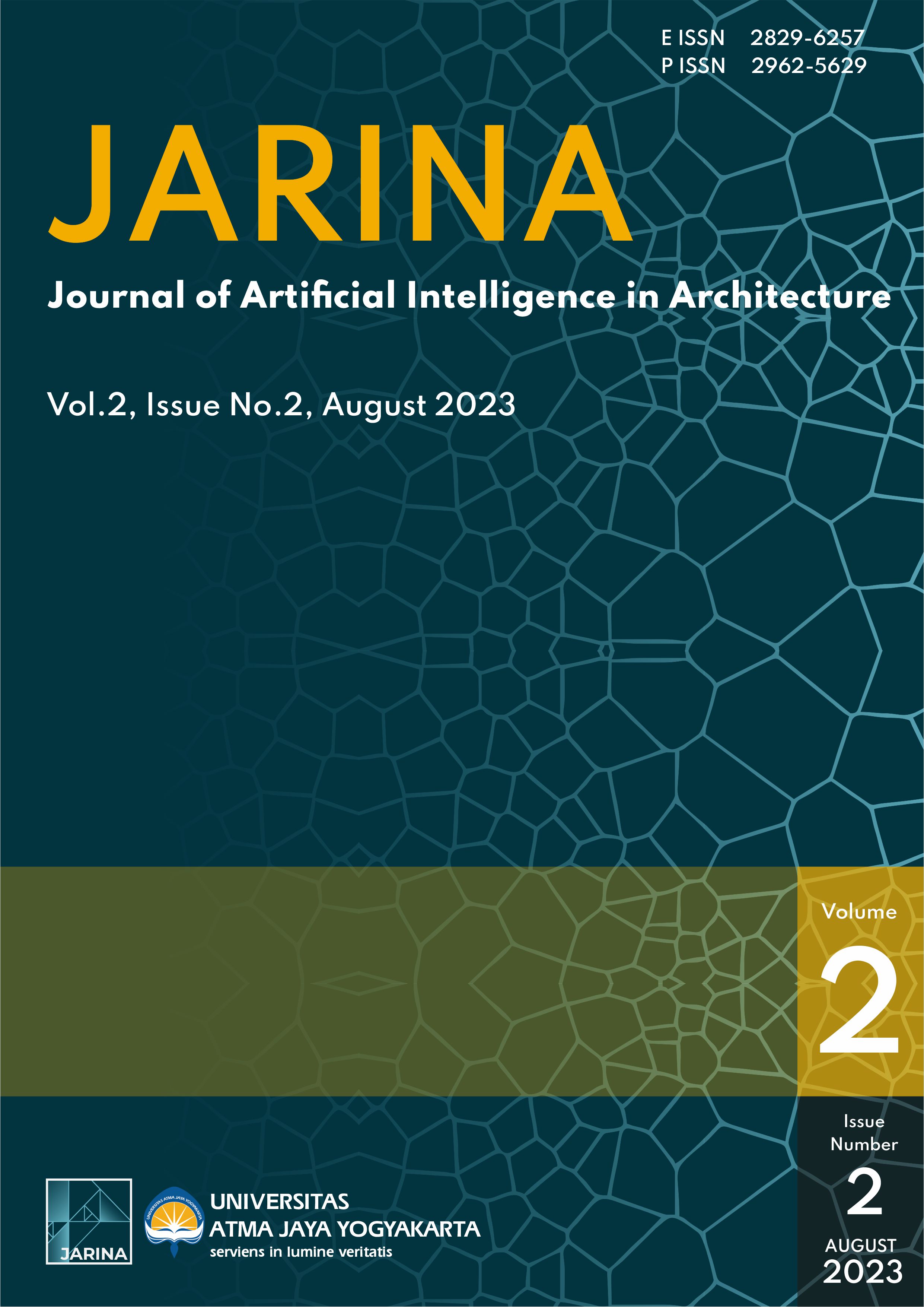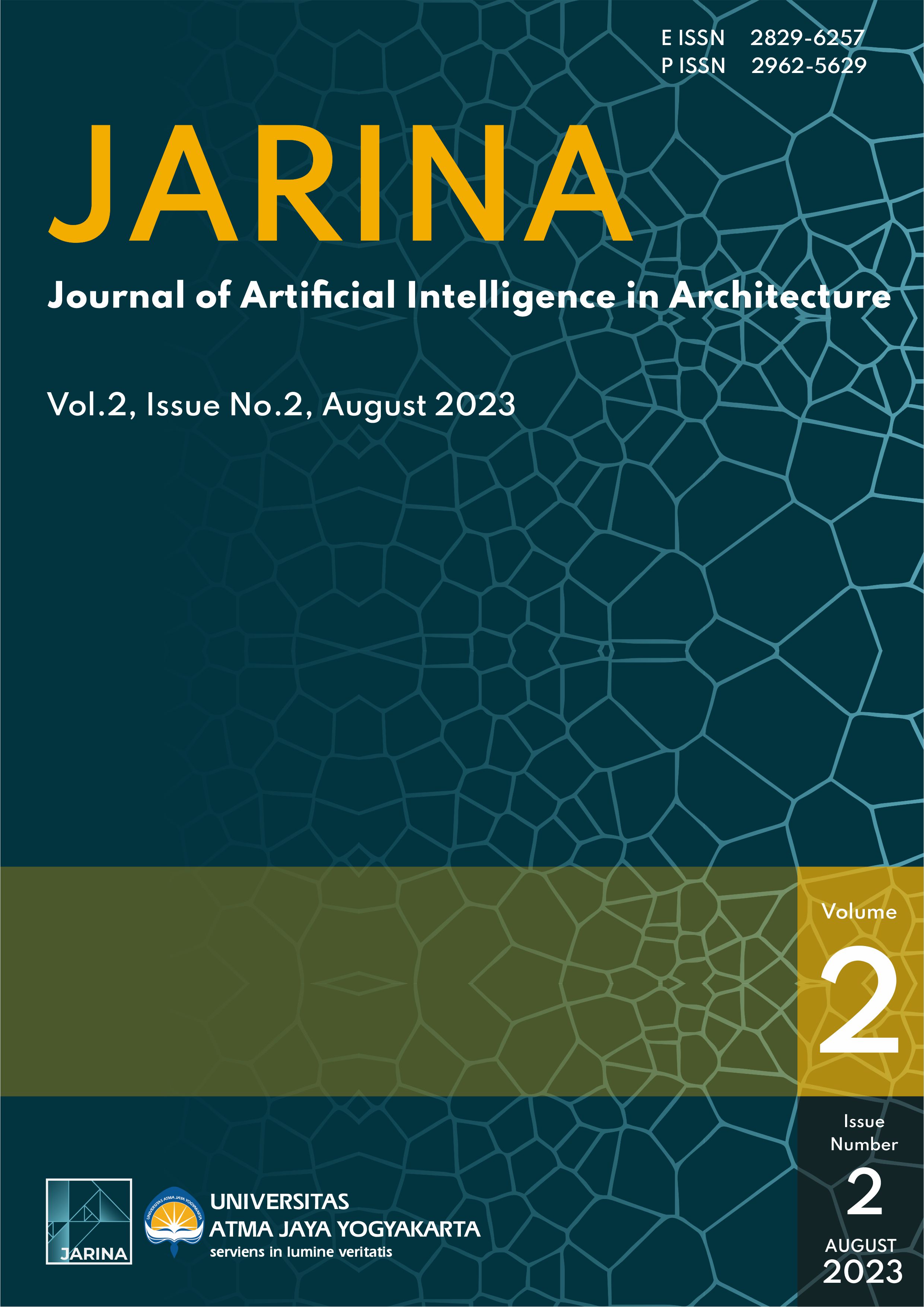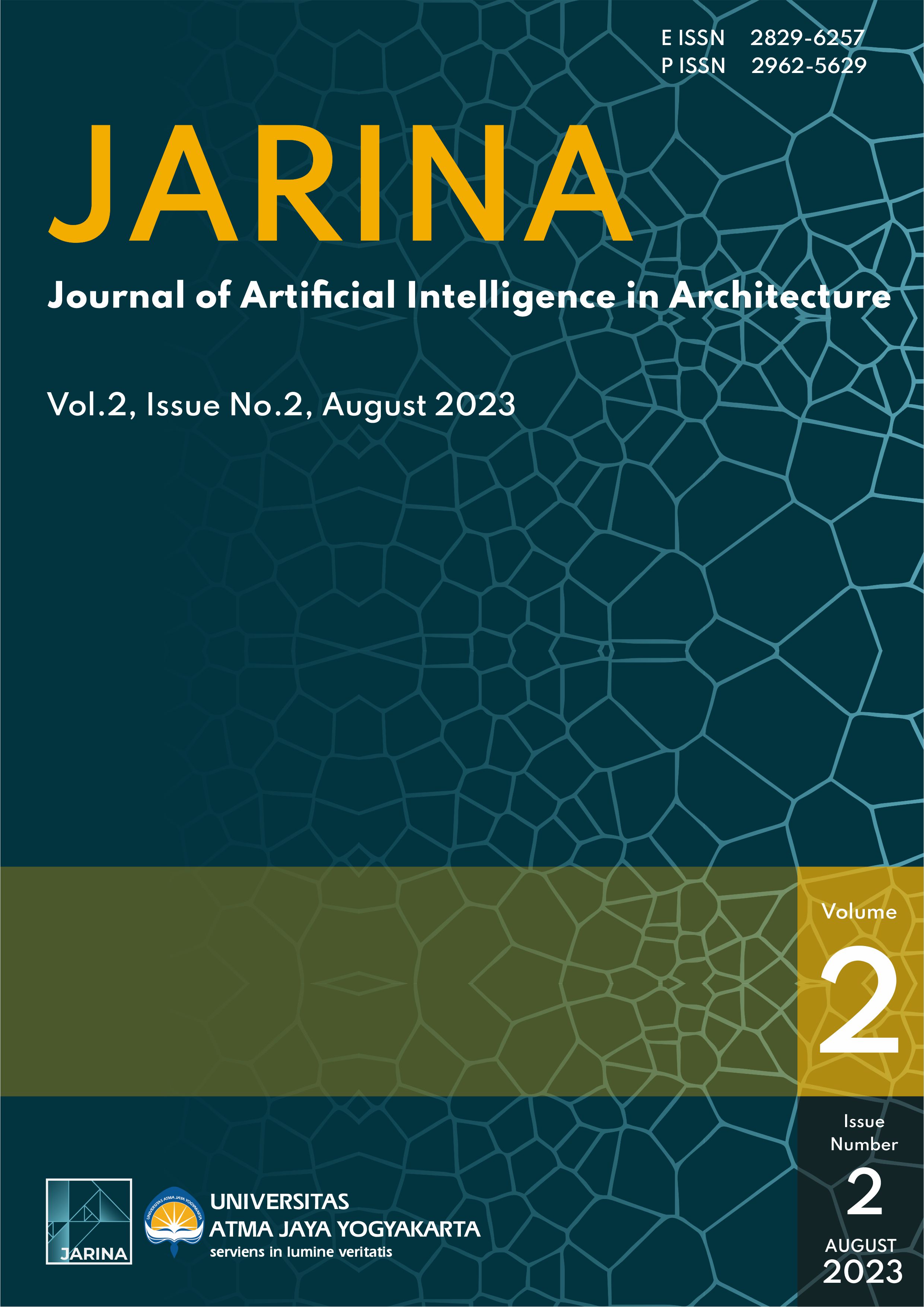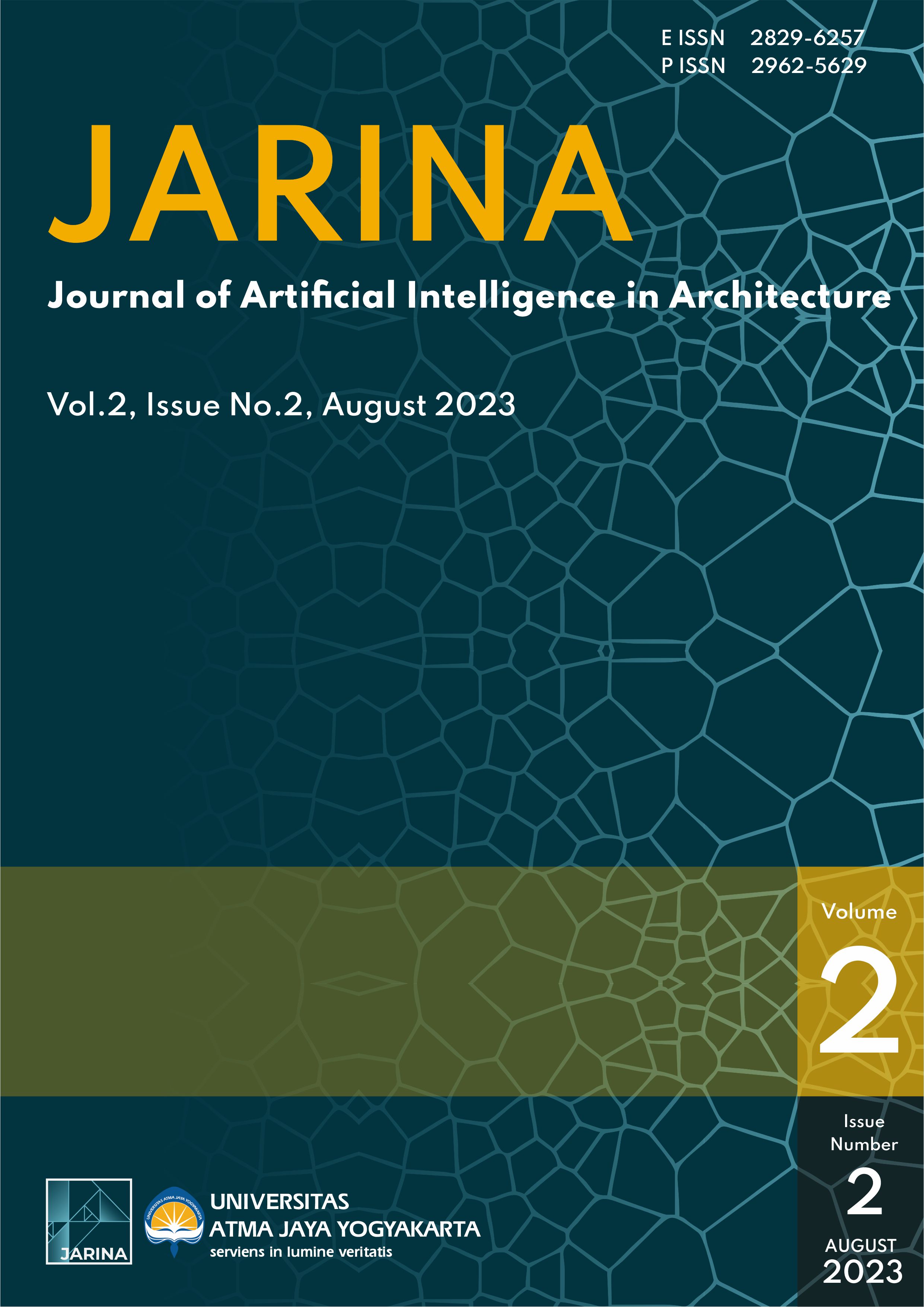Vol. 2 No. 2 (2023): Artificial Intelligence for Enhancing Building Performance, Design, and Analysis: Innovations in Sustainable Architecture and Virtual Spaces

The Age of Artificial General Intelligence (AGI) is imminent, driven by the explosive rate of Artificial Intelligence (AI) advancement. Decades ago, scientists were anxious about how machines and their ability to learn and think will affect and shape the future of our civilization. Various responses and forewarnings were conveyed publicly, both scientifically and fictionally. Hollywood movies such as "Ex Machina," "Transcendence," "Westworld," as well as worldwide blockbusters "Star Trek," "Star Wars," "Terminator," and "Avengers," demonstrate their predictions of AI that manage to achieve "singularity" and trigger extreme living conditions, either as utopia or dystopia.
This trend has long been acknowledged in the field of architecture and design. Computer Aided Designs, as the foundation of the digital era in architecture, now begin to be installed with AI features capable of providing user feedback. As a result, computers are more than just operated for drawing and presenting projects. Instead, they can act as private assistants actively involved in the design process. Among the popular features are climate analysis, form-finding algorithms, innovative, collaborative platforms, AI-assisted imagery, data collector and organizer, narrative generator, and many other functions. Although today those features appear only to incorporate "narrow AI" specialized for their tasks, experts suggest that it will not take long before "strong AI" or AGI takes over the whole process of architectural practices.
To explore further in those trends, this fourth release of JARINA (Journal of Artificial Intelligence in Architecture) presents five authors to convey their ideas and findings. As a recap, the first author examines several window materials to reduce building energy consumption using EnergyPlus. The second author uses Autodesk Revit to evaluate several techniques to optimize daylight inside Islamic housing. The third author identifies the potential of the virtual world for the development of architecture. The fourth author formulates the popularity of several Indonesian cities using Google Trends regarding users' healing purposes. Then, the fifth author discusses how MidJourney, an AI-generated imagery tool, can be deployed for architectural practices.
We have high expectations that all of the papers here inspire us to fortify our knowledge, particularly about architecture and technology, for a better future. In addition, we also express our best gratitude to all of the authors and parties involved in publishing this fourth issue. Lastly, we sincerely invite all researchers on digital art, informatics, neuroscience, technology in architecture, building sciences, urban design, and other similar topics to join us in JARINA.
Jackobus Ade Prasetya Seputra
EDITOR IN CHIEF
J A R I N A
Journal of Artificial Intelligence in Architecture


 Abstract views: 530 times |
Abstract views: 530 times |  Downloads: 472 times |
Downloads: 472 times |



















